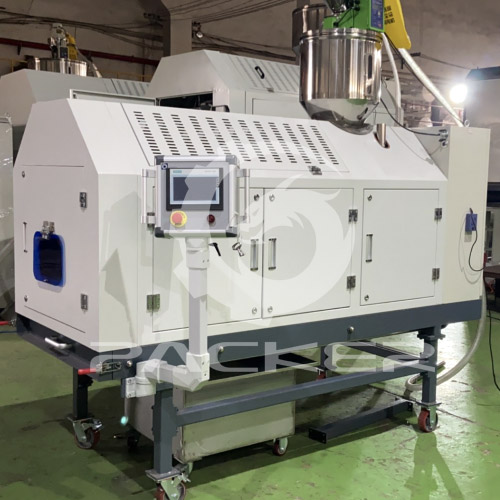Ensuring Safety in Plastic Master Batch Pellet Dryer Operations: Essential Guidelines
2024-03-16
In the fast-paced environment of plastics manufacturing, safety remains paramount to protect personnel, equipment, and the integrity of the products being produced. When operating a plastic master batch pellet dryer, adherence to strict safety protocols is crucial to prevent accidents, minimize risks, and maintain a secure working environment. Let's explore the key safety measures that should be implemented when operating these specialized dryers.
1. Proper Installation and Setup:
1. Location Assessment: Ensure the dryer is installed in a well-ventilated area with sufficient clearance around the equipment to facilitate maintenance and emergency access.
2. Stable Foundation: Securely anchor the dryer to a stable foundation to prevent movement or instability during operation.
3. Electrical Safety: Ensure all electrical connections comply with safety standards and regulations, and employ ground fault circuit interrupters (GFCIs) to prevent electrical hazards.
2. Operator Training and Awareness:
1. Comprehensive Training: Provide thorough training to operators on the safe operation of the dryer, including proper startup/shutdown procedures, emergency protocols, and hazard recognition.
2. Safety Equipment: Ensure operators have access to personal protective equipment (PPE) such as gloves, safety glasses, and hearing protection to mitigate risks associated with handling plastic pellets and operating machinery.
3. Emergency Procedures: Establish clear protocols for responding to emergencies such as equipment malfunctions, fires, or chemical spills, and conduct regular drills to ensure operators are prepared to act swiftly and effectively.
3. Equipment Maintenance and Inspection:
1. Regular Inspections: Implement a routine maintenance schedule to inspect dryer components, electrical systems, and safety features for signs of wear, damage, or malfunction.
2. Cleaning Procedures: Regularly clean and remove debris from dryer components to prevent buildup and ensure optimal performance, taking care to follow manufacturer-recommended cleaning procedures.
3. Component Replacement: Promptly replace any worn or damaged components to maintain the integrity and safety of the dryer system, and use only approved replacement parts to avoid compromising performance or safety.
4. Hazard Mitigation:
1. Fire Safety: Install fire suppression systems and ensure the dryer is equipped with temperature monitoring and cutoff mechanisms to prevent overheating and mitigate fire risks.
2. Dust Control: Implement dust control measures to minimize the accumulation of combustible dust particles within the dryer and surrounding area, reducing the risk of explosions or fires.
3. Chemical Handling: Store and handle chemical additives and master batch pellets in accordance with safety data sheets (SDS) and proper handling procedures to prevent exposure and contamination.
Conclusion:
In conclusion, ensuring safety in the operation of plastic master batch pellet dryers requires a comprehensive approach that encompasses proper installation, operator training, equipment maintenance, and hazard mitigation strategies. By implementing robust safety measures and protocols, manufacturers can minimize risks, protect personnel and equipment, and maintain a secure working environment conducive to efficient and productive plastics manufacturing operations. Safety should always remain a top priority in every aspect of plastics manufacturing, including the operation of specialized equipment like master batch pellet dryers.


